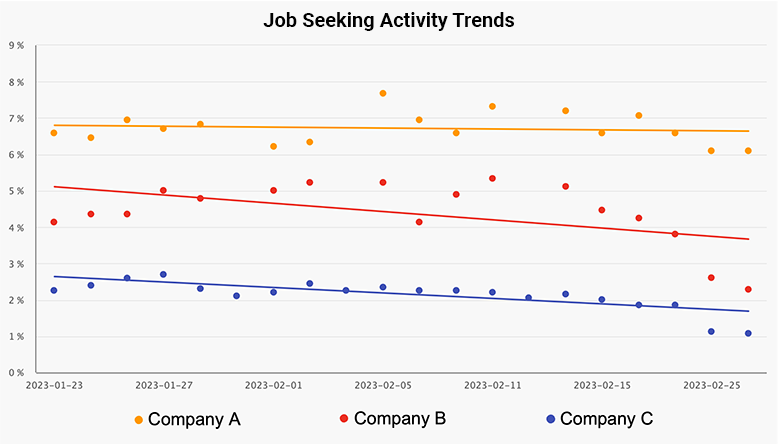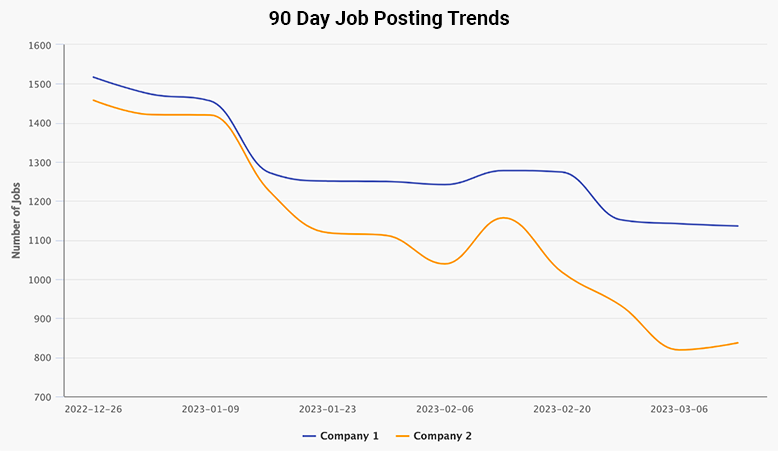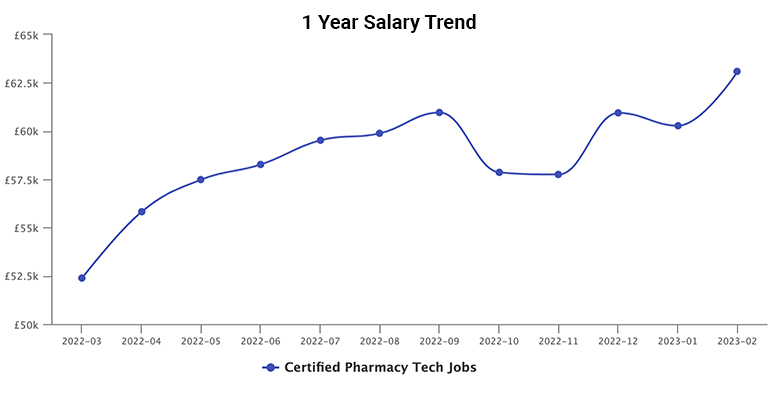Investors often seek unconventional sources of data to gain valuable insights into the companies and markets they're investing in. This type of information, otherwise known as alternative data, provides a unique perspective that can give them a competitive edge in generating alpha.
Pairing insights into the skills, employers, and locations of global talent with the hiring and salary trends of companies is an essential part of developing an actionable investment strategy in 2023 and beyond.
Here are three ways that real-time labor market intelligence can give investment strategies a competitive edge.
1. Identify sinking ship companies with relatively high attrition
Real-time labor market intelligence can help investors spot trends in the percentage of employees showing job seeking activity at companies of interest. If a company's employment numbers are falling, it suggests potential operational or financial issues that could impact stock price. Having access to real-time alerts and insights into global job seeking trends across specific skillsets, job titles, sectors, industries and companies can provide temperature checks on workforces. This data can also be used to create benchmarks and even show which employees are planning to leave before it happens. For example, a possible departure of key executives could hinder a company's future performance and thus affect the company's valuation when announced. Also, incoming layoffs and merger news often create uncertainty and movement among workers well before they are announced publicly.

2. Hiring trends can be used to forecast future growth or decline in specific markets
Investors can compare the amount of publicly active job postings across similar companies to see which are growing the fastest. For instance, if employment in the healthcare and life sciences industry is rising, it suggests demand for healthcare services and products is also on the increase, which, in turn, will make this sector more attractive to investors. Hiring trends data can also help investors to augment their understanding of the market by pairing point-in-time changes with real world events.

3. Examine salary trends to avoid companies that are stuck in the past
Understanding wage inflation or reduction can provide valuable insights into potential changes in SG&A costs. This data can also help to anticipate potential headwinds for talent in specific markets. For example, if wage inflation is high, it might mean an organization will find it harder to attract and retain skilled candidates. If wages fall, it will be easier to attract and retain talent. Salary information can also be used to conduct salary benchmarking to help investors decide if potential investment targets are under or over-paying employees, which could have consequences further down the line.
Pay transparency: What US job posting data tells us about this growing trend

Real-time labor market intelligence can let investors know what’s happening in the labor market right now to help eliminate uncertainty before an investment.
Book a demo today to see how Claro can transform your investment strategy.
